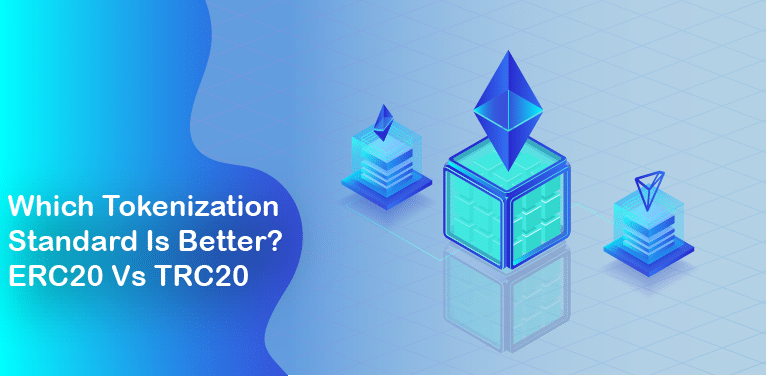Both ERC20 and TRC20 are smart-contract tokenization standards that offer the ability for the user to create a token for themselves, and these tokenization standards differ mainly on which cryptocurrency network they’re on, where ERC20 is on the Ethereum blockchain, and TRC20 is on the Tron blockchain. There are other differences we’ll discuss, but that is the biggest difference. Regarding the acronyms themselves, the first letter stands for the network, Ethereum, and Tron, with the other two letters standing for “Request for Comment”.
ERC20 on the Ethereum Network
If you’d like to create a token, without needing to develop your own cryptocurrency network/blockchain, then the next best thing would be to create it on an already existing network. One option would be to create a token as an ERC20 on the Ethereum blockchain.
While it is easier to create an ERC20 token in comparison to developing a whole new blockchain, it is still a technical task where you’d need an ERC20 developer to help you create your token.
If you decide to create your token as an ERC20, you’d have to follow the rules of the Ethereum blockchain, and be chained to it, for better or for worse.
When you begin the process of creating your ERC20 token, you’d have to think of a name for it, its symbol, the total supply, how the tokens will be transferred, the owner’s account balance, and the address connected to it, and so on.
It’s also worth noting that transactions of the newly created ERC20 type token will have a transaction fee that must be paid using Ethereum’s native token ETH.
Ethereum is by far the most used and popular network to create tokens on. An example would be DAI or USDC, these are Stabelcoins.
TRC20 on the Tron Network
If you’d like to create a token on a different network, then the Tron network is the next best thing to Ethereum, as it has a very similar structure to it, with some differences, mainly that it is a Proof-Of-Stake (POS) based blockchain, whereas Ethereum is Proof-Of-Power (POW).
Aside from that, you’ll mostly have a similar experience when creating a token on the Tron blockchain, where you’d have to input the appropriate information like its name and symbol, its total supply, and so on, and abide by its rules and network conditions.
You’d also be bound to pay transaction fees of your newly created TRC20 token using Tron’s native token, TRX. So make sure that you have some of that in your wallet when you’d like to send someone some of your tokens!
An example of a TRC20 token would be USDT (TRC20), which is also a Stablecoin created by Tether.
Also read: Best Fast And Cheap Cryptocurrencies
Which is better? ERC20 Vs TRC20
There are a lot of reasons why one would choose to create and issue their crypto token on either ERC20 Vs TRC20 tokenization standards. One reason could be that you’d prefer the high adoption rate that the Ethereum network has managed to capture, or you’d like to have faster and cheaper transaction fees on the Tron network.
Regardless of which of these networks you choose to have your crypto token issued on, you’d have to look back into your crypto project and see how you’d like to crypto token to be handled in your project, business, or activity, and factor them into your decision, as well as the difference between these tokenization types, and see which one fits you best.
Also read: What is the difference between Altcoins and ERC-20 tokens?
